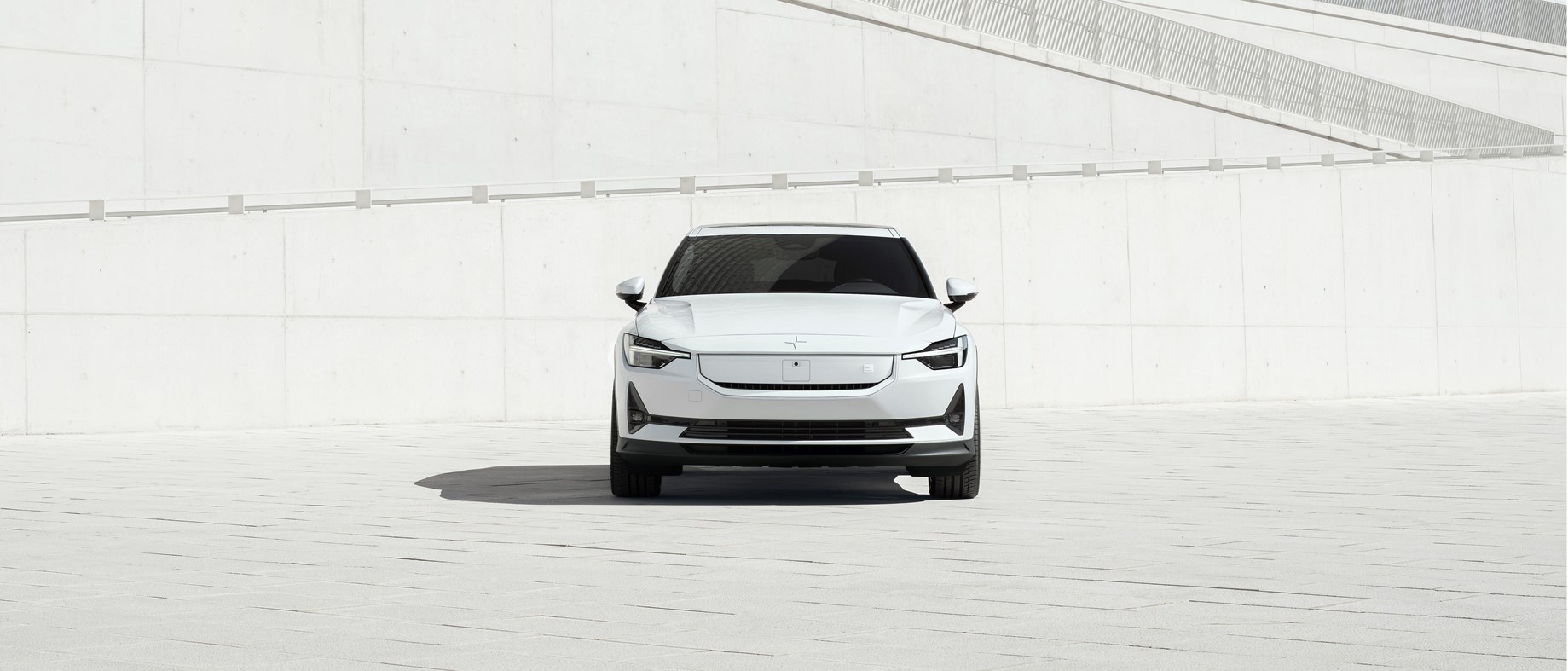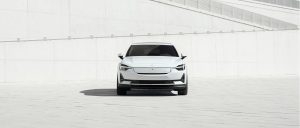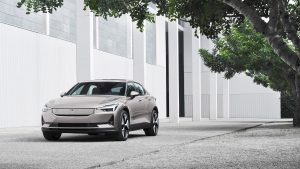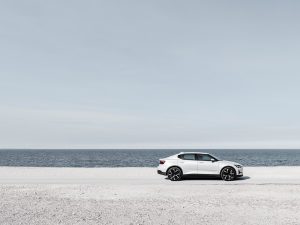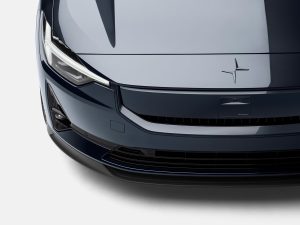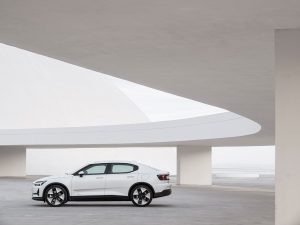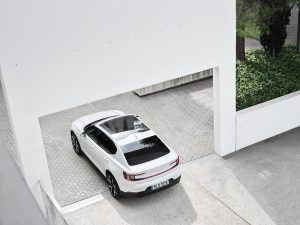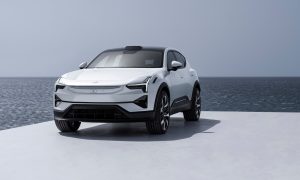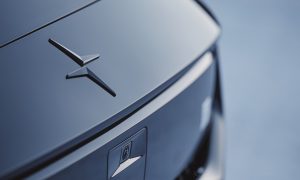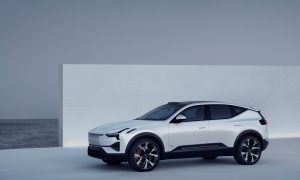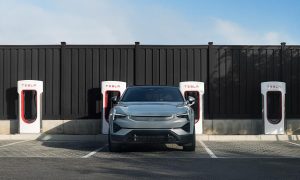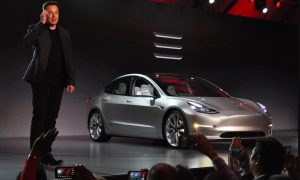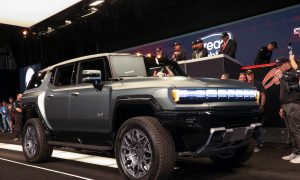Polestar has revealed its next-generation Polestar 2 sedan, which comes with a series of significant upgrades and some minor design changes.
Polestar is an innovative Swedish EV brand that has quickly gained a cult following in North America and Europe for its sleek and modern design, relentless dedication to sustainable manufacturing, and premium interior offerings which have clearly benefitted from the company’s relation to Volvo. Now, the company has released the next generation of its trendy Polestar 2 sedan, and with some significant performance upgrades, the vehicle has only become a more enticing offering.
Foremost in the company’s press release is the sad passing of the front-wheel-drive model; it will be missed. But in its place, Polestar has followed in the footsteps of Tesla and made rear-wheel-drive the standard drive for its vehicles. Along with the change in orientation, Polestar has designed an all-new drivetrain that means the RWD model could be pretty squirrely.
With Polestar’s new permanent magnet motor design, the single motor, RWD, standard range sedan comes with 300 horsepower (220kW), 361 pound-feet of torque, and a (while not blistering) respectable 0-60 of 6.2 seconds. Compared to the current generation sedan, this is an increase of over 60 horsepower and roughly 120 pound-feet of torque.
Luckily, this massive boost in power doesn’t come at the detriment of range. With the standard 69kWh battery, the RWD Polestar 2 achieves a range of 322 miles (518km), and with the optional 82kWh long-range battery, the sedan is capable of a staggering 395 miles (635km) of range. However, it should be noted that with the smaller standard-range battery, drivers are limited to a charging speed of 135kW instead of the 205kW the long-range battery is capable of.
Now, don’t hold your breath if you are like me and think this new upgrade has you ready to buy. Polestar will not sell the standard range sedan in North America, meaning that the base model vehicle’s price will likely rapidly increase in the next generation.
For those who are more interested in the higher performance trims, Polestar has not left you hanging. The dual-motor AWD variant of the Polestar 2, which is only available with the longer-range battery, receives an equally massive bump in power. A rear-biased system produces 422 horsepower (310kW) and 545 pound-feet of torque, rocketing the sport sedan to 60 in just 4.5 seconds. And if that isn’t enough, Polestar also sells an optional Performance Pack, which increases power to 476 horsepower and lowers the 0-60 to just 4.2 seconds.
Other upgrades to the next-gen vehicle focus on its driving tech and sustainability. Foremost, Polestar will include the “Smart Zone” on the vehicle, a panel of radar sensors, and cameras on the front of the car to aid in autonomous driving applications. While this sensor array was first displayed on the upcoming Polestar 3 SUV, it’s clear that the company will introduce it to more products as it continues to improve its autonomous driving offering.
The upgrade in sustainability is also quite significant, as Polestar has cut the carbon emissions per car produced by over a ton, equating to a far better lifecycle carbon footprint than the current generation.
Pricing has not yet been made available by Polestar for markets outside of Europe. Still, the Standard Range RWD model will be available for 50,190 euros (not available in North America), with the top-of-the-line Long Range AWD Performance model going for 64,690 euros ($70,315). The base model that will be available in North America, the Long-Range RWD, coming in March of this year, sells for 53,890 euros ($58,569).
Following Tesla’s recent price cuts, the Polestar 2, despite its unique upgrades, comes off as quite the premium offering and may face some significant backlash for not following Tesla’s steps and lowering prices. And while the company may receive some help if it can assemble the vehicle at Volvo’s South Carolina facility, allowing it to qualify for the US Federal EV incentive, it would still be priced a full $10,000 more than the base Tesla Model 3. It remains unclear if the focus on sustainability and the more premium interior will attract customers from the EV juggernaut in North America or globally.
What do you think of the article? Do you have any comments, questions, or concerns? Shoot me an email at william@teslarati.com. You can also reach me on Twitter @WilliamWritin. If you have news tips, email us at tips@teslarati.com!
Elon Musk
Tesla reveals it is using AI to make factories more sustainable: here’s how
Tesla is using AI in its Gigafactory Nevada factory to improve HVAC efficiency.

Tesla has revealed in its Extended Impact Report for 2024 that it is using Artificial Intelligence (AI) to enable its factories to be more sustainable. One example it used was its achievement of managing “the majority of the HVAC infrastructure at Gigafactory Nevada is now AI-controlled” last year.
In a commitment to becoming more efficient and making its production as eco-friendly as possible, Tesla has been working for years to find solutions to reduce energy consumption in its factories.
For example, in 2023, Tesla implemented optimization controls in the plastics and paint shops located at Gigafactory Texas, which increased the efficiency of natural gas consumption. Tesla plans to phase out natural gas use across its factories eventually, but for now, it prioritizes work to reduce emissions from that energy source specifically.
It also uses Hygrometric Control Logic for Air Handling Units at Giafactory Berlin, resulting in 17,000 MWh in energy savings each year. At Gigafactory Nevada, Tesla saves 9.5 GWh of energy through the use of N-Methylpyrrolidone refineries when extracting critical raw material.
Perhaps the most interesting way Tesla is conserving energy is through the use of AI at Gigafactory Nevada, as it describes its use of AI to reduce energy demand:
“In 2023, AI Control for HVAC was expanded from Nevada and Texas to now include our Berlin-Brandenburg and Fremont factories. AI Control policy enables HVAC systems within each factory to work together to process sensor data, model factory dynamics, and apply control actions that safely minimize the energy required to support production. In 2024, this system achieved two milestones: the majority of HVAC infrastructure at Gigafactory Nevada is now AI-controlled, reducing fan and thermal energy demand; and the AI algorithm was extended to manage entire chiller plants, creating a closed-loop control system that optimizes both chilled water consumption and the energy required for its generation, all while maintaining factory conditions.”
Tesla utilizes AI Control “primarily on systems that heat or cool critical factory production spaces and equipment.” AI Control communicates with the preexisting standard control logic of each system, and any issues can be resolved by quickly reverting back to standard control. There were none in 2024.
Tesla says that it is utilizing AI to drive impact at its factories, and it has proven to be a valuable tool in reducing energy consumption at one of its facilities.
Elon Musk
Tesla analysts believe Musk and Trump feud will pass
Tesla CEO Elon Musk and U.S. President Donald Trump’s feud shall pass, several bulls say.

Tesla analysts are breaking down the current feud between CEO Elon Musk and U.S. President Donald Trump, as the two continue to disagree on the “Big Beautiful Bill” and its impact on the country’s national debt.
Musk, who headed the Department of Government Efficiency (DOGE) under the Trump Administration, left his post in May. Soon thereafter, he and President Trump entered a very public and verbal disagreement, where things turned sour. They reconciled to an extent, and things seemed to be in the past.
However, the second disagreement between the two started on Monday, as Musk continued to push back on the “Big Beautiful Bill” that the Trump administration is attempting to sign into law. It would, by Musk’s estimation, increase spending and reverse the work DOGE did to trim the deficit.
Every member of Congress who campaigned on reducing government spending and then immediately voted for the biggest debt increase in history should hang their head in shame!
And they will lose their primary next year if it is the last thing I do on this Earth.
— Elon Musk (@elonmusk) June 30, 2025
President Trump has hinted that DOGE could be “the monster” that “eats Elon,” threatening to end the subsidies that SpaceX and Tesla receive. Musk has not been opposed to ending government subsidies for companies, including his own, as long as they are all abolished.
How Tesla could benefit from the ‘Big Beautiful Bill’ that axes EV subsidies
Despite this contentious back-and-forth between the two, analysts are sharing their opinions now, and a few of the more bullish Tesla observers are convinced that this feud will pass, Trump and Musk will resolve their differences as they have before, and things will return to normal.
ARK Invest’s Cathie Wood said this morning that the feud between Musk and Trump is another example of “this too shall pass:”
BREAKING: CATHIE WOOD SAYS — ELON AND TRUMP FEUD “WILL PASS” 👀 $TSLA
She remains bullish ! pic.twitter.com/w5rW2gfCkx
— TheSonOfWalkley (@TheSonOfWalkley) July 1, 2025
Additionally, Wedbush’s Dan Ives, in a note to investors this morning, said that the situation “will settle:”
“We believe this situation will settle and at the end of the day Musk needs Trump and Trump needs Musk given the AI Arms Race going on between the US and China. The jabs between Musk and Trump will continue as the Budget rolls through Congress but Tesla investors want Musk to focus on driving Tesla and stop this political angle…which has turned into a life of its own in a roller coaster ride since the November elections.”
Tesla shares are down about 5 percent at 3:10 p.m. on the East Coast.
Elon Musk
Tesla scrambles after Musk sidekick exit, CEO takes over sales
Tesla CEO Elon Musk is reportedly overseeing sales in North America and Europe, Bloomberg reports.

Tesla scrambled its executives around following the exit of CEO Elon Musk’s sidekick last week, Omead Afshar. Afshar was relieved of his duties as Head of Sales for both North America and Europe.
Bloomberg is reporting that Musk is now overseeing both regions for sales, according to sources familiar with the matter. Afshar left the company last week, likely due to slow sales in both markets, ending a seven-year term with the electric automaker.
Tesla’s Omead Afshar, known as Elon Musk’s right-hand man, leaves company: reports
Afshar was promoted to the role late last year as Musk was becoming more involved in the road to the White House with President Donald Trump.
Afshar, whose LinkedIn account stated he was working within the “Office of the CEO,” was known as Musk’s right-hand man for years.
Additionally, Tom Zhu, currently the Senior Vice President of Automotive at Tesla, will oversee sales in Asia, according to the report.
It is a scramble by Tesla to get the company’s proven executives over the pain points the automaker has found halfway through the year. Sales are looking to be close to the 1.8 million vehicles the company delivered in both of the past two years.
Tesla is pivoting to pay more attention to the struggling automotive sales that it has felt over the past six months. Although it is still performing well and is the best-selling EV maker by a long way, it is struggling to find growth despite redesigning its vehicles and launching new tech and improvements within them.
The company is also looking to focus more on its deployment of autonomous tech, especially as it recently launched its Robotaxi platform in Austin just over a week ago.
However, while this is the long-term catalyst for Tesla, sales still need some work, and it appears the company’s strategy is to put its biggest guns on its biggest problems.
-

 Elon Musk2 days ago
Elon Musk2 days agoTesla investors will be shocked by Jim Cramer’s latest assessment
-

 News7 days ago
News7 days agoTesla Robotaxi’s biggest challenge seems to be this one thing
-

 News2 weeks ago
News2 weeks agoTesla’s Grok integration will be more realistic with this cool feature
-

 Elon Musk2 weeks ago
Elon Musk2 weeks agoElon Musk slams Bloomberg’s shocking xAI cash burn claims
-

 News2 weeks ago
News2 weeks agoTesla China roars back with highest vehicle registrations this Q2 so far
-

 News2 weeks ago
News2 weeks agoTexas lawmakers urge Tesla to delay Austin robotaxi launch to September
-

 News2 weeks ago
News2 weeks agoTesla dominates Cars.com’s Made in America Index with clean sweep
-

 Elon Musk1 week ago
Elon Musk1 week agoFirst Look at Tesla’s Robotaxi App: features, design, and more

